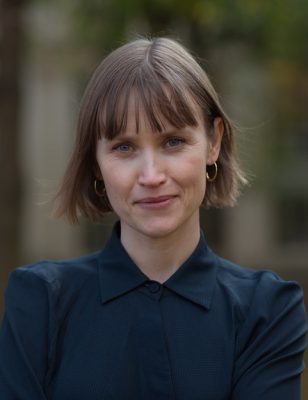 Abstract: Aerosol particles are ever-present in both natural environments, and in engineered systems. In large part, control over aerosol particle transport hinges upon control of particle inertia, i.e. the propensity of particles to maintain a particular trajectory whilst the surrounding fluid moves in a distinct direction. Increasing the inertia of increasingly small particles typically involves increasing particle initial velocities, such that when fluid velocities slow down, particle-fluid velocity differences are maximized. While inertial principles have long been exploited in a wide variety of aerosol instruments, including impactors, virtual impactors, and aerodynamic particle spectrometers, application of inertially-governed aerosol systems wherein the particle Mach number (based on its velocity difference with the fluid) approaches or even exceeds unit value are much more limited. This presentation will overview current understanding of aerosol particle behavior in high-speed systems, and subsequently discuss ongoing studies of high speed particle behavior. Specifically, the drag force on particles as a function of both the Knudsen number and the Mach number, derived from direct simulation Monte Carlo, will first be discussed. Subsequently, results from ongoing studies of crater formation due to microparticle impacts at up to 1 km s-1 speeds with high-speed flight-relevant materials will be presented. Also discussed will be insights from atomistic simulations into the changes in crystallinity and defect density experienced by particles during high-speed impacts, relevant to aerosol deposition of coatings, and the optimization of virtual impactor aerosol concentrators operating near the sonic limit, capable of submicrometer particle concentration enhancement.
Abstract: Aerosol particles are ever-present in both natural environments, and in engineered systems. In large part, control over aerosol particle transport hinges upon control of particle inertia, i.e. the propensity of particles to maintain a particular trajectory whilst the surrounding fluid moves in a distinct direction. Increasing the inertia of increasingly small particles typically involves increasing particle initial velocities, such that when fluid velocities slow down, particle-fluid velocity differences are maximized. While inertial principles have long been exploited in a wide variety of aerosol instruments, including impactors, virtual impactors, and aerodynamic particle spectrometers, application of inertially-governed aerosol systems wherein the particle Mach number (based on its velocity difference with the fluid) approaches or even exceeds unit value are much more limited. This presentation will overview current understanding of aerosol particle behavior in high-speed systems, and subsequently discuss ongoing studies of high speed particle behavior. Specifically, the drag force on particles as a function of both the Knudsen number and the Mach number, derived from direct simulation Monte Carlo, will first be discussed. Subsequently, results from ongoing studies of crater formation due to microparticle impacts at up to 1 km s-1 speeds with high-speed flight-relevant materials will be presented. Also discussed will be insights from atomistic simulations into the changes in crystallinity and defect density experienced by particles during high-speed impacts, relevant to aerosol deposition of coatings, and the optimization of virtual impactor aerosol concentrators operating near the sonic limit, capable of submicrometer particle concentration enhancement.
Biographical Sketch: Dr. Chris Hogan is the Carl and Janet Kuhrmeyer Chair Professor and the Associate Department Head in the Department of Mechanical Engineering at the University of Minnesota, Twin Cities, where has been a faculty member since 2009. His research group focuses largely on fundamental and applied research in aerosols, including the development of theories to describe transport and reactions in aerosols, the design of new measurement principles and instruments for aerosols, and the evaluation of HVAC control technologies. He has published more than 150 peer reviewed papers focusing in these areas, and is the editor-in-chief of the Journal of Aerosol Science.



 Abstract: Recent decades have seen rapid development in all manufacturing technologies, including additive manufacturing (AM). This has raised the need for design methods to leverage the new, increasingly complex fabrication possibilities. Topology optimization has the potential to generate new high-performing design solutions since it is a free-form design method that does not require a preconceived notion of the final layout. It uses computational mechanics and optimization tools to generate improved designs. For operating designs to perform as predicted, the used model must capture the material behavior. Additionally, the planned manufacturing process might induce material characteristics and design limitations that should be considered as the design is generated. This talk focuses on identifying and incorporating behavioral and manufacturing aspects within the design process. Different strategies for integration within topology optimization will be discussed. This includes consideration of manufacturing-induced material characteristics, which is illustrated through tailoring design to material extrusion-based AM. In material extrusion, a nozzle moves across a build plate and deposits a material bead on a 2D slice of the design. These processes typically induce some degree of anisotropy through weak(er) bonding between adjacent beads. To improve the manufacturability of large-scale designs, the application of a Mixed Integer Linear Programming formulation is discussed for highly restricted volume scenarios. Finally, a new design framework is introduced in which the interactive participation of the design engineer is enabled to resolve more complex mechanic phenomena.
Abstract: Recent decades have seen rapid development in all manufacturing technologies, including additive manufacturing (AM). This has raised the need for design methods to leverage the new, increasingly complex fabrication possibilities. Topology optimization has the potential to generate new high-performing design solutions since it is a free-form design method that does not require a preconceived notion of the final layout. It uses computational mechanics and optimization tools to generate improved designs. For operating designs to perform as predicted, the used model must capture the material behavior. Additionally, the planned manufacturing process might induce material characteristics and design limitations that should be considered as the design is generated. This talk focuses on identifying and incorporating behavioral and manufacturing aspects within the design process. Different strategies for integration within topology optimization will be discussed. This includes consideration of manufacturing-induced material characteristics, which is illustrated through tailoring design to material extrusion-based AM. In material extrusion, a nozzle moves across a build plate and deposits a material bead on a 2D slice of the design. These processes typically induce some degree of anisotropy through weak(er) bonding between adjacent beads. To improve the manufacturability of large-scale designs, the application of a Mixed Integer Linear Programming formulation is discussed for highly restricted volume scenarios. Finally, a new design framework is introduced in which the interactive participation of the design engineer is enabled to resolve more complex mechanic phenomena.

